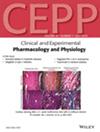Linarin Relieves Apoptosis, Inflammation and Oxidative Stress in LPS-Induced Acute Kidney Injury by Modulating COX2
Abstract
Background
Acute kidney injury (AKI) is a common clinical disease with a rapid decline of renal function. Linarin (LIN) is a flavonoid compound with wide application in different diseases. However, the role and relevant mechanism of LIN in AKI are not fully clear. This study aimed to investigate the function of LIN in modulating the inflammatory response and oxidative stress in lipopolysaccharide (LPS)-induced AKI models and further focused on the interaction between LIN and cyclooxygenase-2 (COX2).
Methods
AKI model in vivo was established in mice with 10 mg/kg LPS and 60 mg/kg/day LIN. Also, the AKI model in vitro was constructed in HK2 cells with 10 μg/mL LPS and 40 μM LIN. The TUNEL assay was used for apoptosis detection in tissues. Cell viability and apoptosis were examined using the CCK-8 assay and flow cytometry. Inflammatory factors and oxidative indicators were determined via ELISA and commercial kits. Target screening was carried out using the PPI network and molecular docking. Expression analysis was performed by RT-qPCR and western blot.
Results
LIN protected kidney tissues from LPS-induced kidney dysfunction and pathological damage in mice. Apoptosis, inflammatory reaction and oxidative stress in LPS-induced mice were restored by LIN. LIN treatment also mitigated kidney cell apoptosis, inflammation and oxidative injury caused by LPS. COX2 (PTGS2) was selected as a hub gene for LIN and AKI through PPI network, and its interaction with LIN was proved by molecular docking. LIN could decrease the COX2 protein expression in LPS-treated HK2 cells. The protective function of LIN from LPS-induced cell injury was achieved by downregulating COX2 level.
Conclusion
These evidences demonstrated that LIN alleviated inflammation and oxidative stress in LPS-stimulated AKI through reducing COX2 protein level.

 求助内容:
求助内容: 应助结果提醒方式:
应助结果提醒方式:


